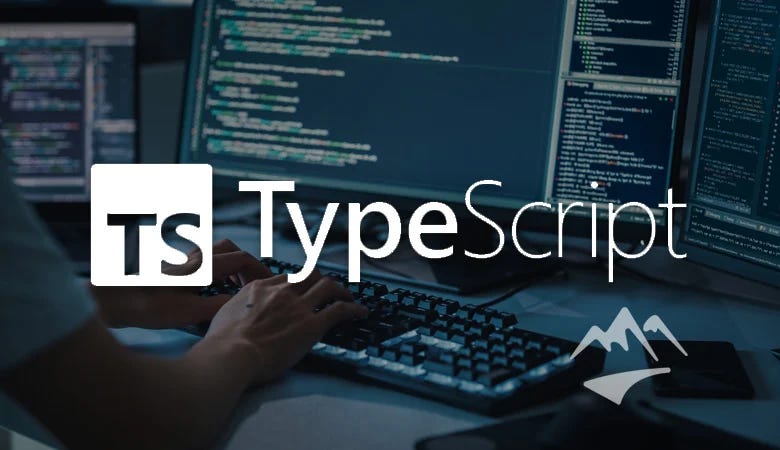Introduction to TypeScript Type Assertions
In the world of modern web development, TypeScript has emerged as an indispensable tool, bringing static typing to the dynamic nature of JavaScript. This type system is designed to catch errors during development, long before they reach production. However, there are times when we, as developers, have more specific information about a value’s type than the TypeScript compiler can infer on its own. This is where TypeScript Type Assertions come into play. A type assertion is a mechanism that tells the compiler to treat a value as a specific type, effectively overriding its inferred or declared type.
It’s a powerful feature, but one that must be used with caution. Unlike type casting in languages like C# or Java, a type assertion in TypeScript performs no special checking or restructuring of data at runtime. It’s purely a compile-time construct used to provide hints to the type checker. This article provides a deep dive into type assertions, exploring their core concepts, practical applications in real-world scenarios like DOM manipulation and API calls, advanced patterns, and crucial best practices. We’ll examine how to use them effectively and, more importantly, when to opt for safer alternatives like TypeScript Type Guards to build more robust and reliable applications.
Section 1: The Core Concepts of Type Assertions
At its heart, a type assertion is a direct instruction to the TypeScript compiler. You are essentially saying, “Trust me, I know what I’m doing. This variable is of this specific type.” This is particularly useful when you’re interacting with parts of your application that TypeScript can’t fully analyze, such as migrating legacy JavaScript to TypeScript or working with external data sources.
Syntax: `as` vs. Angle-Bracket
TypeScript provides two equivalent syntaxes for type assertions:
- The
asSyntax: This is the more modern and generally recommended syntax. - The Angle-Bracket Syntax: This syntax predates the
askeyword.
Here’s a look at both in action. Imagine we have a value of type any that we know is a string.
// Let's assume 'someValue' comes from a legacy API and is typed as 'any'
let someValue: any = "this is a string";
// Using the 'as' syntax (preferred)
let strLength1: number = (someValue as string).length;
// Using the angle-bracket syntax
let strLength2: number = (<string>someValue).length;
console.log(strLength1); // Outputs: 16
console.log(strLength2); // Outputs: 16While both achieve the same result, the as syntax is preferred for a critical reason: compatibility with JSX/TSX. In frameworks like TypeScript React or SolidJS, the angle-bracket syntax conflicts with the syntax for JSX elements (e.g., <Component />). Using as avoids this ambiguity entirely, making it the standard choice in modern TypeScript Projects.
How Assertions Differ from Casting
It’s a common misconception to call type assertions “type casting.” In many programming languages, casting implies a runtime conversion of the data. For example, casting a floating-point number to an integer would truncate the decimal part. TypeScript Type Assertions do nothing of the sort. They are a compile-time-only feature. The assertion is completely erased when your TypeScript code is compiled down to JavaScript. This means if your assertion is incorrect, you won’t get a compile-time error, but you will likely face a runtime error when your JavaScript code tries to access a property or method that doesn’t exist on the actual value.
Consider this dangerous example:
let myValue: any = 123; // This is a number, not a string
// We are incorrectly asserting that myValue is a string
// TypeScript will NOT complain here.
let strLength: number = (myValue as string).length;
// This will compile to: let strLength = myValue.length;
// At runtime, this becomes: let strLength = (123).length;
// This results in 'undefined' because numbers don't have a length property.
console.log(strLength); // undefined
// If we tried to call a string method, it would crash:
// (myValue as string).toUpperCase(); // TypeError: myValue.toUpperCase is not a functionThis example highlights the core responsibility that comes with using assertions: you are taking full responsibility for the type’s correctness, and the TypeScript Compiler will trust you implicitly.
Section 2: Practical Applications and Real-World Examples

While assertions should be used judiciously, they are invaluable in several common development scenarios. Let’s explore how they are applied when working with the DOM, handling asynchronous API calls, and managing events.
Working with the DOM
One of the most frequent use cases for type assertions is interacting with the Document Object Model (DOM). When you select an element, TypeScript’s type inference is often general. For instance, document.getElementById() returns the type HTMLElement | null. This is accurate, but HTMLElement is a broad type. If you know you’ve selected an input field, you’ll want to access specific properties like .value, which don’t exist on the generic HTMLElement type.
// Without assertion, this would cause a type error
// Property 'value' does not exist on type 'HTMLElement'.
// const inputElement = document.getElementById('my-input');
// const inputValue = inputElement.value;
// With type assertion
const inputElement = document.getElementById('my-input') as HTMLInputElement;
// Now we can safely access the 'value' property
if (inputElement) {
console.log(inputElement.value);
}
// Another common scenario: querySelector
const canvasElement = document.querySelector('#main-canvas') as HTMLCanvasElement;
if (canvasElement) {
const context = canvasElement.getContext('2d');
// ... now you can work with the 2D rendering context
}Here, we assert that the element with the ID my-input is an HTMLInputElement. This allows the TypeScript compiler to understand that this object will have a value property, enabling type-safe access and autocompletion in your editor.
Handling Asynchronous API Data
When fetching data from an external API in an Async TypeScript function, the response body is typically unknown until it’s received. Libraries like `fetch` or `axios` will often type the response data as any or unknown. To work with this data in a type-safe way, we define an interface that matches the expected data structure and then assert the response to that type.
This is a common pattern in TypeScript Node.js applications using frameworks like TypeScript Express or TypeScript NestJS, as well as in frontend frameworks like TypeScript Angular or TypeScript Vue.
// Define an interface for the expected API response
interface UserProfile {
id: number;
name: string;
email: string;
isActive: boolean;
}
async function fetchUserProfile(userId: number): Promise<UserProfile> {
try {
const response = await fetch(`https://api.example.com/users/${userId}`);
if (!response.ok) {
throw new Error(`HTTP error! status: ${response.status}`);
}
// The .json() method returns a Promise that resolves to 'any'
const data = await response.json();
// Assert the 'any' type to our specific UserProfile interface
return data as UserProfile;
} catch (error) {
console.error("Failed to fetch user profile:", error);
// In a real app, you'd handle this error more gracefully
throw error;
}
}
// Usage
fetchUserProfile(1)
.then(user => {
// We get full type safety and autocompletion here
console.log(`User Name: ${user.name}`);
console.log(`User Email: ${user.email}`);
})
.catch(err => {
// Handle any errors from the fetch call
});In this example, we assert `data` to be of type `UserProfile`. This unlocks all the benefits of static typing for the remainder of our application’s logic, preventing common bugs related to typos in property names or incorrect data types.
Section 3: Advanced Patterns and Potential Pitfalls
As you delve deeper into TypeScript, you’ll encounter more complex scenarios that require advanced assertion patterns. However, these patterns often come with increased risk and should be understood thoroughly before use.
The “Double Assertion” Pattern: `as unknown as T`
Sometimes, TypeScript is smart enough to prevent a direct assertion that it deems impossible. For example, you cannot directly assert an object with a completely different shape to another, or a number to a string, because the compiler knows they are not related.
interface Point {
x: number;
y: number;
}
// Let's say we get some data from a misbehaving library
const someData: object = { x: 10, y: 20, z: 30 };
// This will cause a TypeScript error:
// Conversion of type 'object' to type 'Point' may be a mistake because
// neither type sufficiently overlaps with the other.
// const myPoint = someData as Point; // Error!To bypass this safety check, developers sometimes use a “double assertion.” The value is first asserted to unknown, and then from unknown to the desired type. The unknown type is special because it can hold any value (like any), but you cannot do anything with it without first refining its type. Critically, you can assert a value of type unknown to *any* other type. This pattern effectively tells the compiler to suspend all its assumptions.
This is often seen when dealing with form data from certain backends or external sources where a value might be represented in a way that TypeScript cannot reconcile.

// Example: Data from a generic key-value store or form submission
// where everything is initially treated as a generic object.
const formData = new Map<string, object>();
formData.set("username", { value: "Alice" });
// We know 'username' is an object containing a string, but TS doesn't.
const usernameObject = formData.get("username"); // Type is 'object | undefined'
// We cannot directly assert { value: "Alice" } to a string.
// const username = usernameObject as string; // Error!
// Using the double assertion pattern
// WARNING: This is risky and should only be used if you are 100% certain.
const username = (usernameObject as any).value as string;
// A slightly safer, more explicit version uses 'unknown'
// This signals to other developers that this is a deliberate and potentially unsafe type conversion.
const usernameFromUnknown = (usernameObject as unknown as { value: string }).value;
console.log(username.toUpperCase()); // ALICE
console.log(usernameFromUnknown.toUpperCase()); // ALICEWhen to use this pattern? Very rarely. It’s a “code smell” that indicates a potential weakness in your type definitions or data handling logic. It’s a last resort for when you are absolutely certain of a type, but cannot convince the compiler through other means. A better approach is almost always to use a type guard or a validation library.
Type Assertions vs. Type Guards
A much safer alternative to assertions is using TypeScript Type Guards. A type guard is an expression that performs a runtime check that guarantees the type in some scope. Common type guards include `typeof`, `instanceof`, and property checks.
You can also create user-defined type guards, which are functions that return a boolean `value is Type` signature. This tells the compiler that if the function returns `true`, the variable passed to it is of that specific type within the corresponding code block.
interface Dog {
bark: () => void;
}
interface Cat {
meow: () => void;
}
type Animal = Dog | Cat;
// This is a user-defined type guard
function isDog(animal: Animal): animal is Dog {
return (animal as Dog).bark !== undefined;
}
function makeAnimalSound(animal: Animal) {
// Using the type guard for a runtime check
if (isDog(animal)) {
// Inside this block, TypeScript KNOWS 'animal' is a Dog.
// No assertion needed!
animal.bark();
} else {
// TypeScript infers that 'animal' must be a Cat here.
animal.meow();
}
}
const myPet: Animal = { bark: () => console.log("Woof!") };
makeAnimalSound(myPet); // Outputs: Woof!Unlike assertions, which are compile-time only, type guards perform a real check at runtime, making your code safer and preventing the runtime errors that incorrect assertions can cause. This is a fundamental concept in writing robust TypeScript Unit Tests with frameworks like Jest TypeScript.
Section 4: Best Practices and Safer Alternatives
To write clean, maintainable, and safe TypeScript code, it’s essential to follow best practices regarding type assertions and know when to reach for better tools.
Guidelines for Using Assertions

- Use Sparingly: Treat type assertions as an escape hatch, not a regular tool. Every assertion is a potential source of runtime errors.
- Prefer `as` Syntax: Always use the
as Typesyntax for consistency and JSX compatibility. - Document Your Assertions: If you must use a complex or non-obvious assertion (especially the `as unknown as T` pattern), leave a comment explaining why it’s necessary and what assumptions you’re making.
- Assert as Early as Possible: When dealing with external data, perform your assertion at the boundary of your system (e.g., right after an API call) and let type inference handle the rest. This contains the “unsafe” part of your code to one location.
Gold Standard: Schema Validation Libraries
For handling any external data, such as API responses, form submissions, or environment variables, the most robust solution is to use a schema validation library. Tools like Zod, Yup, or io-ts allow you to define a schema that is used to both validate the data at runtime and infer the static TypeScript type.
This approach eliminates the need for type assertions entirely and provides true runtime safety. If the data doesn’t match the schema, the library throws a descriptive error, which you can handle gracefully.
Here’s a quick example using Zod, a popular choice in the TypeScript Development community:
import { z } from 'zod';
// 1. Define a schema for your data
const UserProfileSchema = z.object({
id: z.number(),
name: z.string().min(1),
email: z.string().email(),
isActive: z.boolean(),
// You can even define optional properties
lastLogin: z.date().optional(),
});
// 2. Infer the TypeScript type directly from the schema
type UserProfile = z.infer<typeof UserProfileSchema>;
async function getValidatedUserProfile(userId: number): Promise<UserProfile> {
const response = await fetch(`https://api.example.com/users/${userId}`);
const data = await response.json();
// 3. Parse and validate the data at runtime
// This replaces the 'as UserProfile' assertion.
// If validation fails, it throws an error.
const validatedUser = UserProfileSchema.parse(data);
return validatedUser;
}
// Usage
getValidatedUserProfile(1).then(user => {
// 'user' is fully typed and validated. This is the safest approach.
console.log(user.name);
if (user.lastLogin) {
console.log(user.lastLogin.toISOString());
}
});Using a library like Zod is a best practice for any serious TypeScript Project because it bridges the gap between runtime uncertainty and compile-time safety, something type assertions alone can never do.
Conclusion: A Powerful Tool to Be Used with Care
TypeScript Type Assertions are a fundamental feature of the language, providing a necessary escape hatch for developers to guide the compiler in situations it cannot understand on its own. We’ve seen their utility in common scenarios like DOM manipulation and handling API responses, where they allow us to apply more specific types and unlock the full power of TypeScript’s static analysis. However, their power comes with significant responsibility. An incorrect assertion is a bug waiting to happen at runtime, completely bypassing the safety net that TypeScript is meant to provide.
The key takeaway is to approach assertions with a “less is more” mindset. Always question if a safer alternative exists. Prefer TypeScript Type Guards for runtime checks and conditional typing. For validating data from external sources, embrace schema validation libraries like Zod as the gold standard for building truly robust and error-resistant applications. By understanding both the power and the peril of type assertions, you can make more informed decisions, write safer code, and leverage the full potential of the TypeScript ecosystem.




